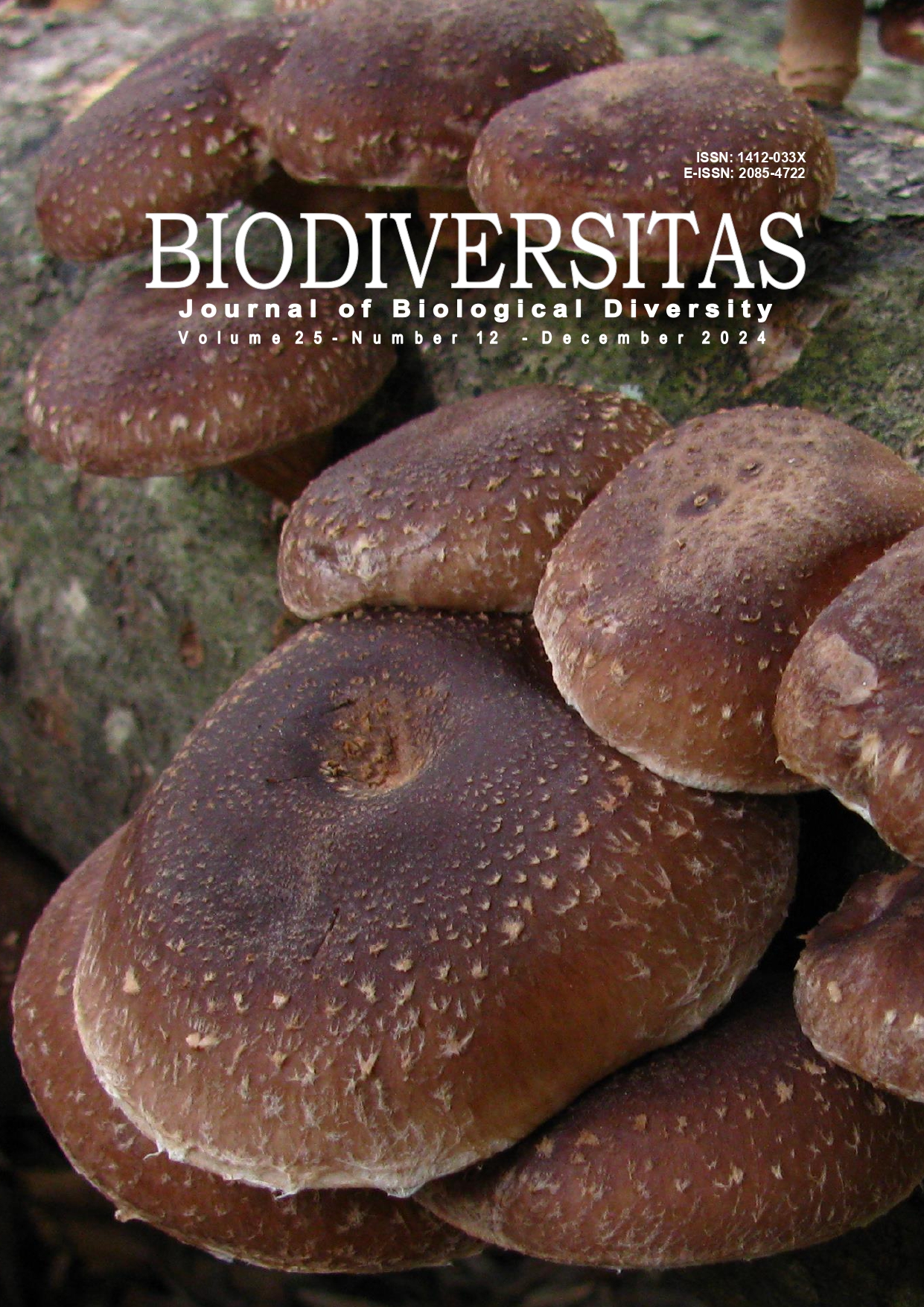Phylogeny of Wolbachia in Drosophila mutant from Bandung, Indonesia
##plugins.themes.bootstrap3.article.main##
Abstract
Abstract. Kusmintarsih ES, Gemilang P, Nuryanto A, Mahmoud HHA, Ambarningrum TB. 2024. Phylogeny of Wolbachia in Drosophila mutant from Bandung Indonesia. Biodiversitas 25: 4894-4899. Wolbachia is a microorganism known as an intracellular endosymbiont in arthropods that causes reproductive changes and most commonly cytoplasmic incompatibility. Wolbachia pipientis A has been divided into two major subgroups (A and B) and 17 subgroups. Therefore, the present study aims to determine the presence of Wolbachia subgroup in Drosophila mutants and to analyze the phylogeny, of Wolbachia in Drosophila mutants using Wolbachia surface protein (wsp) primer genes. The presence of Wolbachia was determined based on the DNA band pattern on the agarose gel. The phylogenetic relationship among Wolbachia in Drosophila mutants was inferred from a phylogenetic tree. Based on the neighbor-joining method, the phylogenetic tree reconstruction was done in MEGA X software. The result shows that Wolbachia from 7 types of Drosophila mutant samples (taxi, ebony, dumpy, miniature, sepia, white, eye missing, in one subgroup as Wolbachia sp. wMel isolate Yunnan outer surface protein precursor (wsp) gene, partial cds., while between samples and out-group is closely related to Wolbachia sp. in Diabrotica cristata 16S rRNA sub-group A. This result is the first systematic survey of Wolbachia in Drosophila mutants and the first survey classifying Wolbachia infections by subgroup. The research future is to explore Wolbachia in many more insects.

